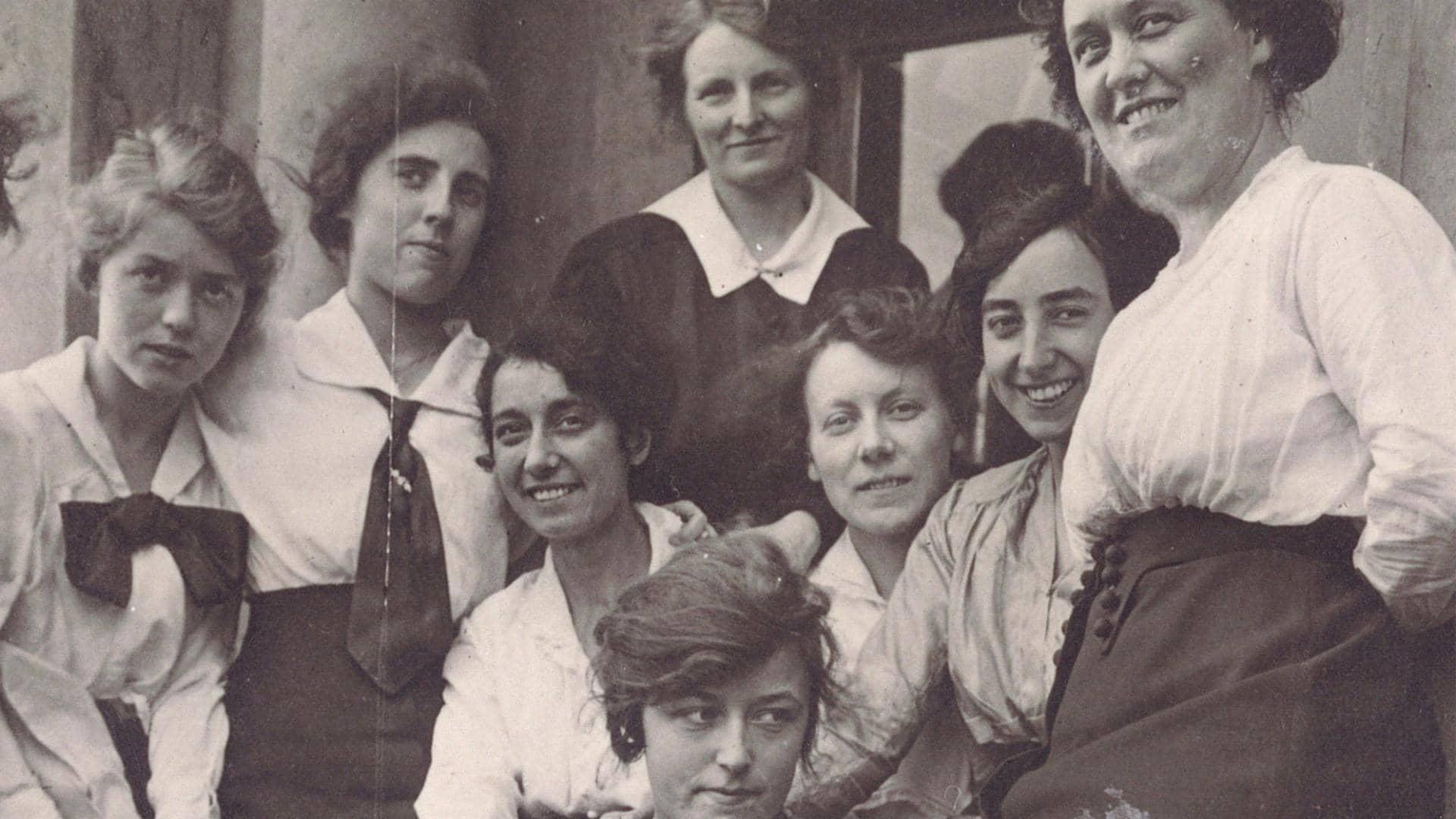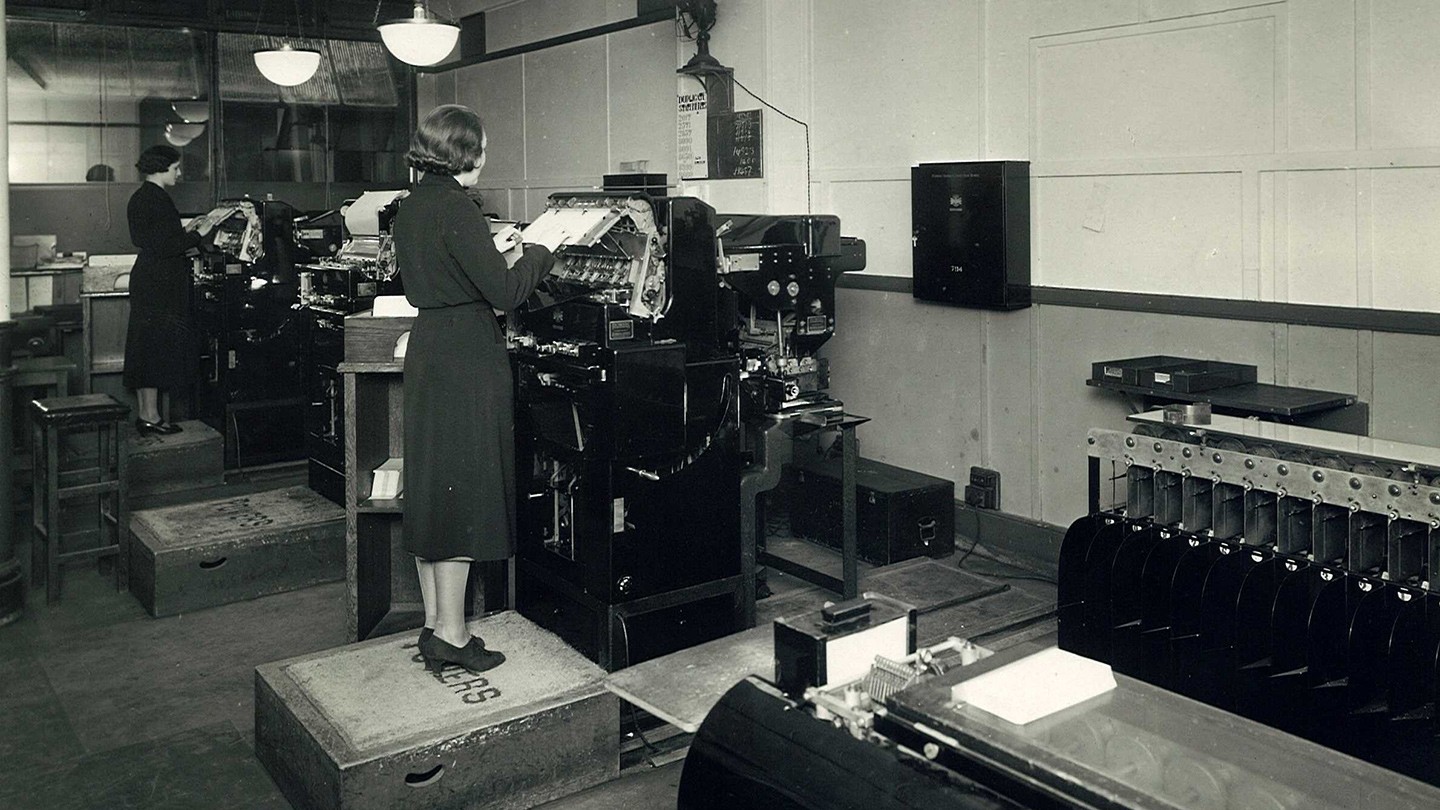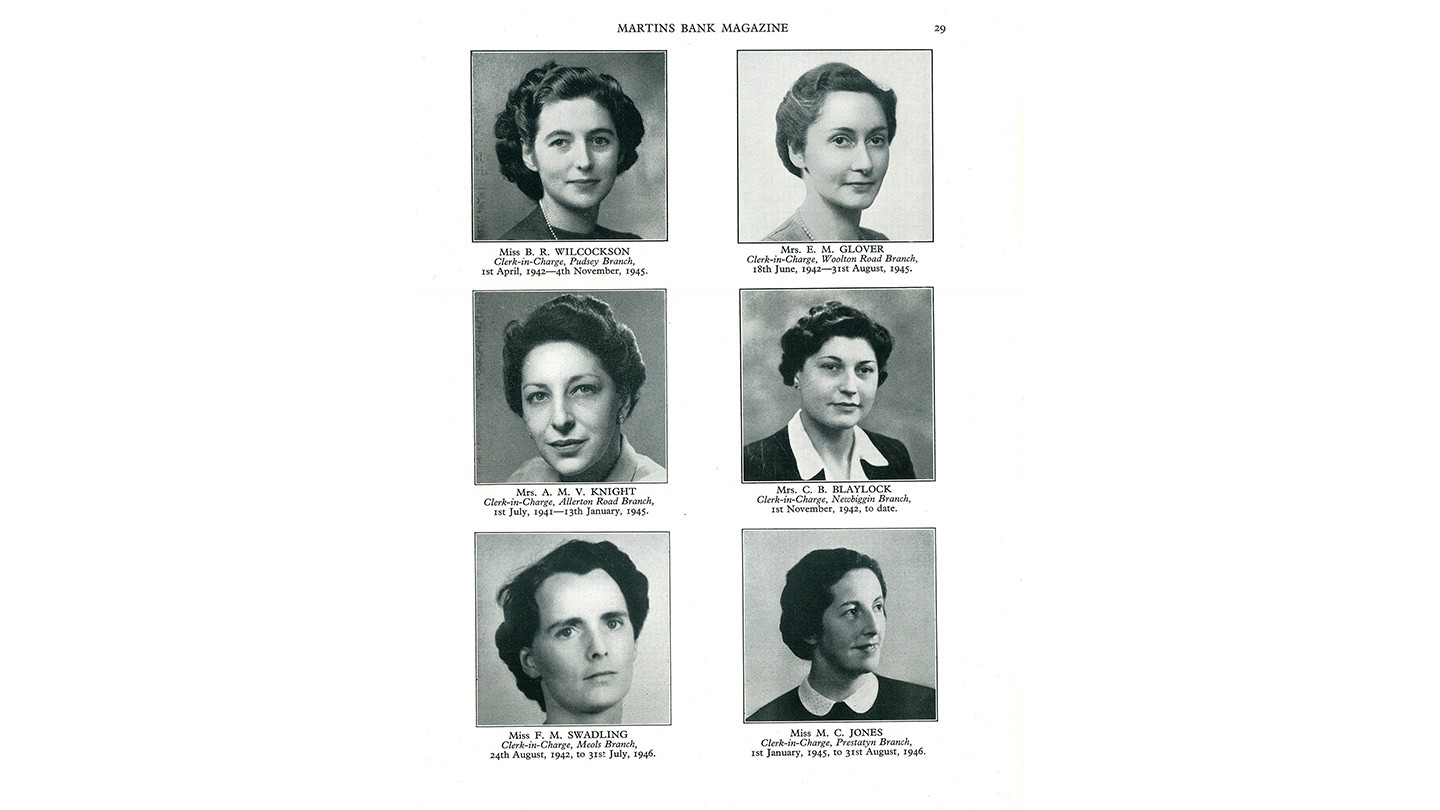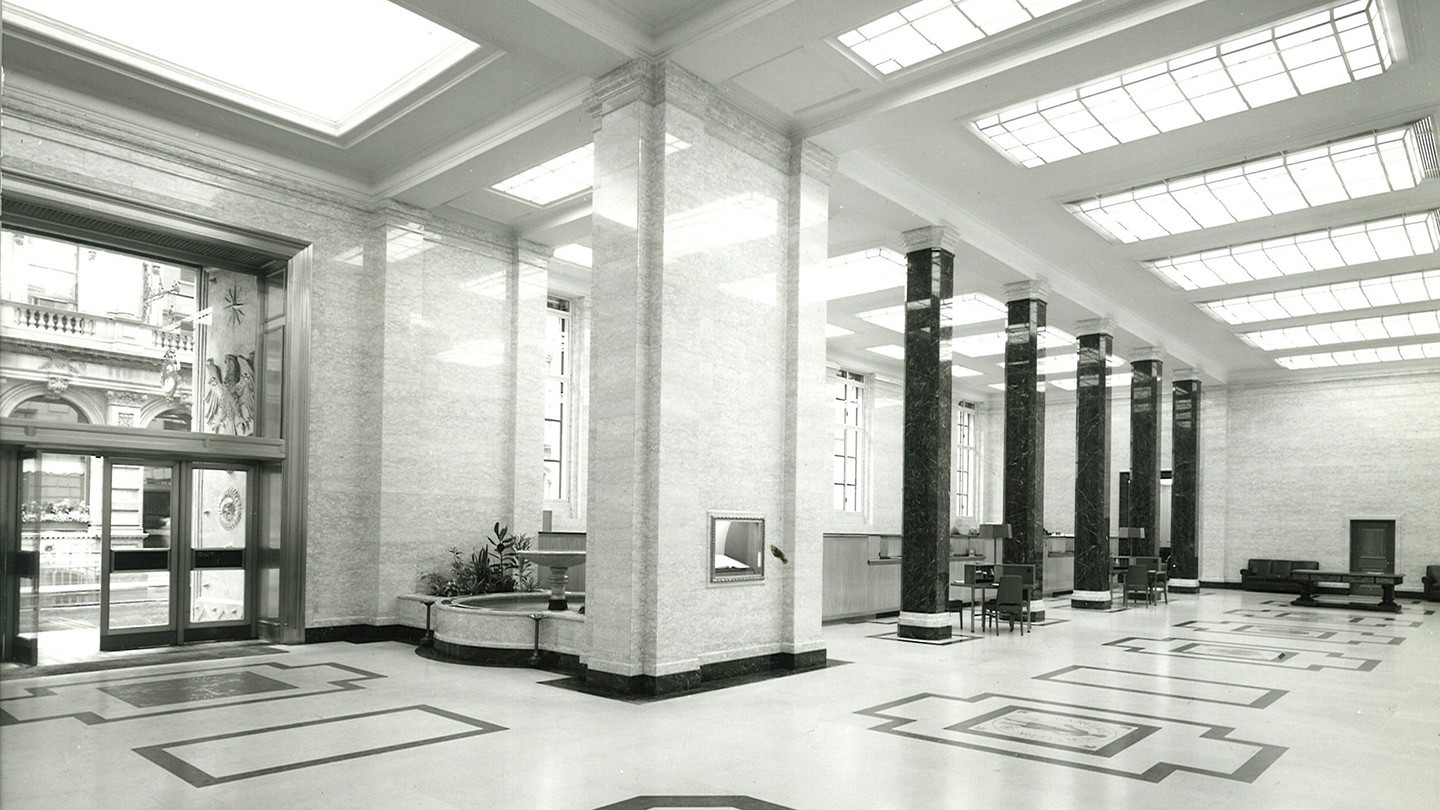
History
Hidden Histories: women in World War I and II
To mark Women’s History Month, we delved into the bank’s archives to find the hidden stories of women in the bank throughout the 20th century. In the first in a three-part series, we reveal the contribution Barclays' women made between the 1910s and 1950s, from keeping the bank running during World War One and Two to the much-vaunted appointment of Britain’s first female bank manager.
Women in the First World War
With the outbreak of World War One in 1914, women were recruited the bank in large numbers as a third of male colleagues left for active service.
While many women in banking and finance at the time were released at the war’s end, Barclays’ board did not permit this, though in 1923 the bank restricted women to a quarter of the workforce.
During the inter-war period, telephones, typewriters and adding machines became familiar items around the bank’s offices – foreshadowing the technological revolution to come. Women were trained as telephonists, typists and machine operators, ensuring the smooth running of the bank’s communications. Here, women are pictured in the machine room at Fenchurch Street using the Powers-Samas accounting machines.

Barclays women operating the Powers-Samas accounting machines at 168 Fenchurch Street.
Women in the Second World War
As World War Two loomed, women were once again recruited to fill the roles vacated by men going away to fight. In autumn 1946, the Martins Bank staff magazine ran a feature titled ‘The Ladies’ celebrating the female staff who kept the bank running during the war.

‘The Ladies’ was a feature that ran in Martins Bank staff magazine in 1946.
By 1941, 6,000 women were working for the bank and the working environment was adapted accordingly, including the introduction of women’s toilets. One notable colleague who paved the way to improving 20th century working conditions was Miriam Pease, a Barclays Assistant Staff Manager with responsibility for women.

The Hon. Miriam Pease playing golf at North Berwick Links, Scotland in 1927
Within a year of her appointment to the role in 1941, Pease had fashioned a detailed report on the necessary changes to improve working conditions for all Barclays employees. The report included lighting, ventilation, furniture, fire exits, illness, job security, sports and social facilities, and rats (the city’s historic rodent population were not exempt from the bank’s offices).
However, it took more than 20 years for the bank to implement Pease’s actions due to World War Two. The new head office which opened in 1969 was bright, modern and spacious, as pictured below.

The new Barclays concourse on 54 Lombard Street built after World War Two
Britain’s first female bank manager
While the title of ‘manager’ was not applied to women at the time, many women were effectively managing branches. A Barclays memo written 12 May 1944 notes: “If need be small offices may be staffed by women only, carefully chosen for the purpose and where they themselves raise no objection.”
It wasn’t until later in 1958 that Barclays colleague Hilda Harding was appointed as the bank’s – and Britain’s – first ever female manager at the Barclays Hanover Street branch. Her promotion caused shockwaves across the City and marked a ground-breaking moment in the history of banking and finance. Headlines read “A Honey Blonde Among the Money” and “Would you trust your money to a woman?”.
When asked by a reporter at Tatler magazine whether there were other women bank managers in the world, Hilda replied: “Only two that I know of, one in China and another in Chicago, and I believe the Chicago bank deals with only women clients.”
A letter from Head Office announcing Hilda’s appointment states: “The appointment is a natural step in the development of the increasingly important role women have come to play in the Bank.”

Hilda Harding became Britain’s first female bank manager in 1958
Accounting for less than one fifth of the bank’s workforce prior to World War Two, by the 1950s the number of women and men working for Barclays were almost equal. This number continued to rise and by the 1960s, three fifths of the bank’s employees were women – a significantly higher proportion than other clearing banks at the time.